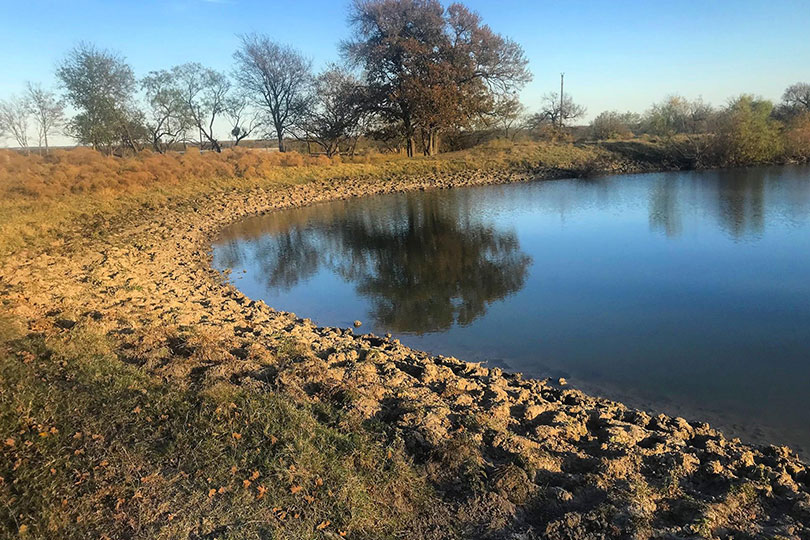Much of the state appears to be facing a continued dry spell through winter, according to State Climatologist Dr. John Nielsen-Gammon.
October and November were two of the driest Octobers and Novembers on record. It was excessively dry during the typically wet fall months. Nielsen-Gammon anticipates the dry conditions to continue through the next several weeks at least.
The lack of rain causes increased concerns about fire danger and poorly developed winter pastures, including wheat. Water levels in ponds for livestock are also dropping, according to reports from Texas A&M AgriLife Extension Service agents in areas that have missed rain events.
Nielsen-Gammon said October through November 2017 was the 12th-driest since the state started keeping records in 1895. September and October are typically wetter months for Texas, he said, but rain didn’t materialize.
No single county in Texas has received at least 4 inches of rain anywhere within its borders since the beginning of October, he said.
Drier areas of the state, including north central, west and south Texas, have received less than two inches over that period. Areas from the Winter Garden to Big Bend and from Lubbock to the Red River have received less than half an inch during those 60 days.
Warmer days, winds and lack of rain are drawing a growing portion of the state into drought conditions. The drought monitor shows 35 percent of the state is in drought, up from just 2.5 percent a month ago, Nielsen-Gammon said.
“October is usually one of the wettest months and oftentimes is extremely wet, but it’s been fairly dry. The forecast going forward into winter doesn’t look promising,” he said. “Overall for the next couple of weeks, it looks like most of the state will average less than half an inch of rainfall.”
Nielsen-Gammon said it is too early to draw any comparisons to the state’s last significant dry spell when a dry fall and winter in 2010 stretched into spring and summer 2011. But La Niña conditions in the Pacific Ocean, which translates into warmer, drier air for much of the state, are expected through winter.
“Its effect will vary by region and local conditions when it comes to forage, crops and surface water, but it’s been hard so far, particularly on winter wheat in Northeast Texas because they are well below normal for rainfall,” he said. “Fields are having difficulty emerging and getting established.”

